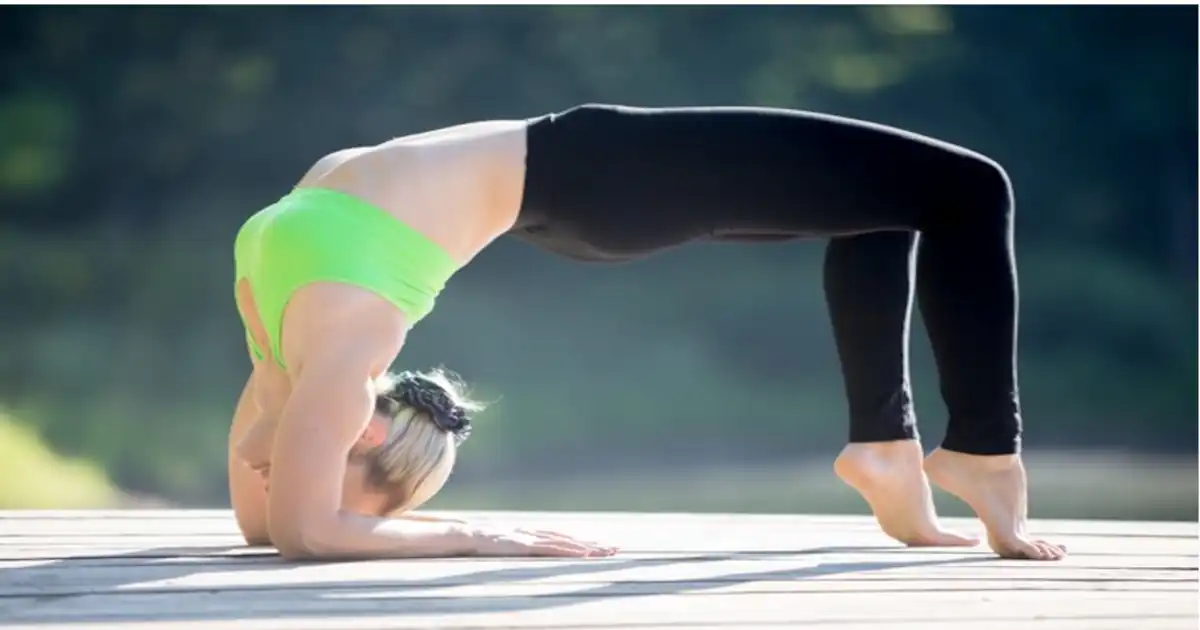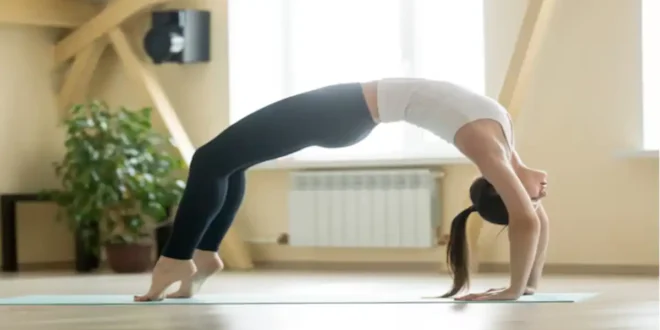Introduction to yoga wheel
In recent years, the yoga wheel has emerged as a popular fitness tool, captivating the attention of yoga enthusiasts and fitness lovers alike. This innovative prop not only enhances traditional yoga practices but also provides a range of benefits that can improve flexibility, strength, and overall well-being. In this comprehensive guide, we will delve into what a yoga wheel is, its benefits, techniques for usage, and tips for choosing the right one for your practice.
What is a Yoga Wheel?
A yoga wheel is a circular, cylindrical prop typically made of durable materials like wood or high-density plastic. It is about 12 inches in diameter and 5-6 inches wide, designed to support various yoga poses and stretches. The wheel can be used to deepen stretches, assist in balance, and improve alignment. It is an excellent tool for practitioners of all levels, from beginners to advanced yogis, looking to enhance their practice.
The Anatomy of a Yoga Wheel
Before we explore the benefits and techniques associated with yoga wheels, it’s essential to understand their construction:
- Material: Yoga wheels are typically made from high-quality materials such as PVC, wood, or cork. The inner surface may be padded with foam for comfort and grip.
- Size: While the standard size is around 12 inches in diameter, yoga wheels come in various sizes to accommodate different body types and preferences.
- Weight Capacity: Most yoga wheels can support weights of up to 300 pounds, making them suitable for a wide range of users.
Benefits of Using a Yoga Wheel
1. Improved Flexibility
One of the most significant benefits of using a yoga wheel is its ability to enhance flexibility. The wheel helps deepen stretches and allows practitioners to achieve poses they might find challenging without support. For example, placing the wheel under the back during a backbend can help open the chest and shoulders, promoting greater flexibility.
2. Increased Strength
Incorporating a yoga wheel into your practice can also contribute to increased strength. Using the wheel engages various muscle groups, particularly in the core and upper body. Poses like wheel push-ups or planks with feet on the wheel can build impressive strength and stability.
3. Enhanced Balance
Balancing on a yoga wheel can be challenging, which is why it’s an excellent tool for improving stability and coordination. Practicing balance poses on the wheel, such as a one-legged warrior or tree pose, can enhance your overall balance and body awareness.
4. Better Posture and Alignment
The yoga wheel encourages better alignment in poses, which can ultimately improve posture. By using the wheel to guide your body into the correct position, you can develop a stronger mind-body connection and reduce the risk of injury. This is particularly beneficial for individuals who spend long hours sitting at a desk.
5. Stress Relief
Yoga is renowned for its stress-relieving benefits, and the yoga wheel can enhance this aspect of practice. Rolling on the wheel can provide a gentle massage to the spine, helping to release tension and promote relaxation. This can be particularly soothing after a long day or intense workout.
6. Versatility in Practice
The yoga wheel is a versatile prop that can be used in various styles of yoga, including Hatha, Vinyasa, and Yin. Whether you want to deepen a stretch, modify a pose, or create a new challenge, the wheel can adapt to your needs.
Techniques for Using a Yoga Wheel

Before diving into more advanced poses, it’s crucial to warm up your body. Here are a few warm-up poses using a yoga wheel:
- Seated Forward Bend: Sit on the floor with your legs extended. Place the yoga wheel in front of you. Inhale, lengthen your spine, and as you exhale, reach for the wheel, allowing it to roll away from you as you fold forward.
- Cat-Cow Stretch: Position the yoga wheel under your hands in a tabletop position. As you inhale, drop your belly and lift your gaze (cow pose). Exhale, round your spine, and press into the wheel (cat pose). This dynamic movement warms up the spine.
2. Strength-Building Poses
Once warmed up, you can incorporate strength-building poses that challenge your stability:
- Plank with Wheel: Place your feet on the yoga wheel and get into a plank position. Engage your core and hold for 30 seconds to one minute, focusing on maintaining balance.
- Push-Ups: With your hands on the floor and your feet on the wheel, perform push-ups. This variation intensifies the challenge and builds upper body strength.
3. Flexibility Enhancing Poses
To enhance flexibility, try these poses:
- Backbend: Lie on your back with the yoga wheel positioned under your shoulder blades. Relax your head and let your arms rest by your sides. Allow your chest to open, feeling a gentle stretch in your back.
- Reclined Bound Angle Pose: Sit on the floor with the soles of your feet together, knees dropping to the sides. Place the yoga wheel behind you and lean back onto it. This pose opens the hips and encourages relaxation.
4. Balance Poses
These poses will help improve your balance:
- Warrior III: Stand on one leg and place the other leg behind you. Hold the yoga wheel in front of you with both hands and lean forward, extending your lifted leg straight behind you. This pose develops balance and core strength.
- Tree Pose: Stand tall and bring one foot to your inner thigh. Hold the wheel overhead with both hands, creating a challenge for your balance and stability.
5. Cool Down and Relaxation
After an intense session, it’s essential to cool down:
- Gentle Spine Stretch: Sit cross-legged with the yoga wheel behind you. Lean back gently, allowing the wheel to support your back as you breathe deeply, releasing tension.
- Savasana with Wheel: Lie on your back with the yoga wheel under your knees. This position helps alleviate lower back tension and promotes relaxation.
Tips for Choosing the Right Yoga Wheel
When selecting a yoga wheel, consider the following factors to ensure you choose the right one for your practice:
1. Material
Choose a wheel made of durable materials that can withstand regular use. High-density plastic is lightweight and portable, while wood offers sturdiness and a more natural feel.
2. Size
While the standard size is about 12 inches in diameter, you may prefer a larger or smaller wheel depending on your height and comfort level. Taller individuals may benefit from a larger wheel that provides more surface area.
3. Weight Capacity
Ensure the wheel you choose can support your weight. Most yoga wheels can accommodate up to 300 pounds, but always check the specifications before purchasing.
4. Grip and Comfort
Look for a wheel with a textured surface or padding to enhance grip and comfort. This feature will prevent slipping during poses and ensure a safer practice.
Safety Considerations
While yoga wheels are generally safe, it’s essential to keep the following safety tips in mind:
- Start Slow: If you’re new to using a yoga wheel, begin with basic poses and gradually progress to more advanced techniques to avoid injury.
- Listen to Your Body: Pay attention to how your body feels during practice. If you experience pain or discomfort, modify your pose or take a break.
- Practice on a Soft Surface: Use a yoga mat or practice on a soft surface to provide cushioning and support during your practice.
Conclusion
The yoga wheel is a versatile and beneficial tool for enhancing your yoga practice. Whether you’re looking to improve flexibility, build strength, or relieve stress, the can help you achieve your goals. With a variety of techniques and poses to explore, this innovative prop can transform your practice and elevate your overall well-being.As you embark on your journey with the , remember to choose the right one for your needs, practice safely, and most importantly, have fun exploring the limitless possibilities that this fantastic tool has to offer. Embrace the journey of self-discovery and growth that comes with incorporating the yoga wheel into your routine, and watch as your practice flourishes.
Final Thoughts
Incorporating a into your routine can significantly enhance your practice and overall fitness journey. With consistent use, you’ll notice improvements in flexibility, strength, and balance. As with any fitness tool, the key to maximizing its benefits is to practice regularly and listen to your body. Embrace the challenge, and let the guide you to new heights in your yoga journey.
Frequently Asked Questions (FAQs)
What is a yoga wheel used for in practice?
A yoga wheel is a versatile prop designed to enhor in practice?ance various yoga poses and stretches. It helps improve flexibility, build strength, and promote better alignment. Practitioners can use the wheel to deepen stretches, assist with balance, and relieve tension in the spine, making it an excellent tool for all levels of yogis.
Can beginners use a yoga wheel?
Absolutely! A yoga wheel is suitable for beginners as well as advanced practitioners. It offers support and stability in various poses, making it easier for newcomers to explore their limits safely. Starting with basic exercises can help beginners gradually build confidence and skill as they become more familiar with the prop.
How do I choose the right size yoga wheel?
When selecting , consider your height and comfort level. The standard diameter is around 12 inches, but larger options are available for those who prefer more surface area. Always ensure that the wheel can support your weight and offers a comfortable grip for your practice.
Is using a yoga wheel safe?
Using a is generally safe when practiced correctly. However, it’s essential to start with basic poses and listen to your body. If you experience pain or discomfort, modify your movements or take breaks as needed. Practicing on a soft surface, such as a yoga mat, can also provide additional support and cushioning.
Can a yoga wheel help with back pain?
Yes, a yoga wheel can be beneficial for individuals experiencing back pain. By gently rolling on the wheel or using it to support specific poses, you can relieve tension and stretch tight muscles in the back. Always consult with a healthcare professional before starting any new exercise regimen, especially if you have existing back issues.
How often should I practice with a yoga wheel to see results?
To see noticeable improvements in flexibility, strength, and balance, aim to practice with least two to three times a week. Consistency is key; even short sessions can yield significant benefits over time. Incorporate the wheel into your regular yoga routine and gradually increase the complexity of poses as you become more comfortable.
READ ALSO: What is Pudinapata? A Comprehensive Guide to the Healing Herb
 Touch Blog
Touch Blog



